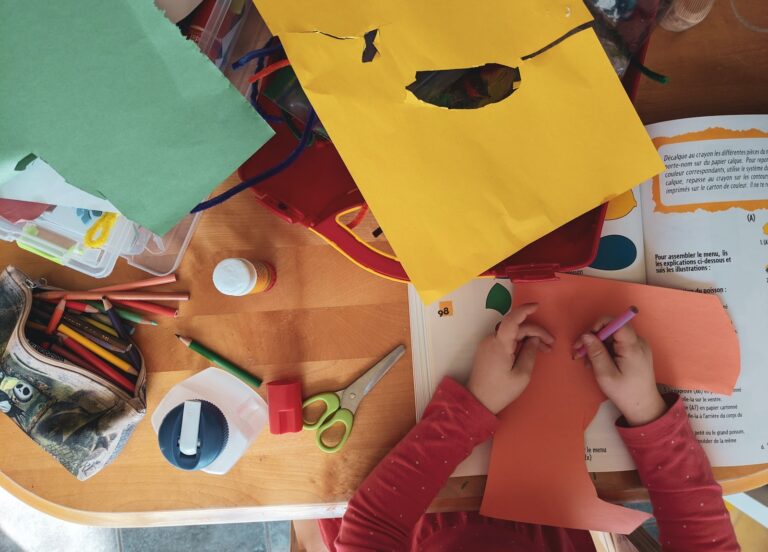Being a mother is a beautiful and rewarding experience, but it also comes with its fair share of challenges. One of the most effective and powerful tools in a mother’s parenting toolbox is positive reinforcement. This technique involves acknowledging and rewarding positive behavior, which not only boosts a child’s self-esteem but also encourages them to continue exhibiting desirable actions.
In this article, we will explore the concept of positive reinforcement in depth, providing 10 examples of how it can be incorporated into your parenting journey. By understanding and implementing these strategies, you can create a nurturing environment that fosters your child’s growth and development.
Understanding Positive Reinforcement
Positive reinforcement is a psychological concept that focuses on rewarding desirable behavior to encourage its repetition. Unlike punishment, which aims to decrease unwanted actions, positive reinforcement aims to strengthen and reinforce positive actions.
Using positive reinforcement effectively requires consistency, patience, and understanding. It is essential to consider each child’s unique personality and tailor your approach accordingly. Let’s dive into 10 examples of positive reinforcement techniques that can make a significant difference in your parenting journey.
1. Verbal Praise and Encouragement
One of the simplest yet most powerful forms of positive reinforcement is verbal praise and encouragement. By using specific language to acknowledge and appreciate your child’s efforts, you can boost their self-esteem and create a positive emotional connection.
For example, if your child completes a challenging task, such as tidying their room without being asked, you can say, “Great job on cleaning your room! I’m proud of your responsibility and independence.”
Remember to be genuine and specific with your praise. This helps your child understand exactly what behavior you are reinforcing and encourages them to continue their positive actions.
2. Reward Charts and Stickers
Visual aids, such as reward charts and stickers, are excellent tools for positive reinforcement. These charts allow you to track and reward your child’s progress towards a specific goal or behavior.
For instance, if your child is trying to develop a habit of brushing their teeth twice a day, you can create a chart where they earn a sticker for each successful brushing session. Once they accumulate a certain number of stickers, they can receive a small reward or treat as a token of appreciation.
This method not only reinforces the desired behavior but also provides a sense of achievement and motivation for your child to keep up the good work.
3. Quality Time and Special Activities
Spending quality time with your child and engaging in special activities can be a powerful form of positive reinforcement. By dedicating undivided attention to your child, you communicate their importance and value, boosting their self-esteem.
Plan activities that your child enjoys, such as a trip to the park, baking together, or playing their favorite game. By doing so, you create positive associations with desirable behavior, making it more likely for them to repeat it in the future.
4. Privileges and Special Privileges
Granting privileges and special privileges as a reward for positive behavior is an effective way to encourage your child to continue their good actions. Privileges can include activities or items that hold value to your child.
For example, if your child consistently completes their homework on time, you can allow them some extra screen time or let them choose what the family watches during movie night. These privileges act as incentives and motivate your child to maintain their responsible behavior.
5. Surprise Rewards
Surprise rewards can be a delightful and unexpected form of positive reinforcement. These rewards are given spontaneously to acknowledge exceptional behaviors or efforts.
For instance, if your child has been working hard on a school project and exceeds their own expectations, you can surprise them with a small gift or a fun outing. This unexpected gesture reinforces their hard work, making them feel appreciated and motivated to continue striving for excellence.
6. Social Recognition
Humans, including children, thrive on social recognition and praise. Acknowledging your child’s positive behavior in front of others can have a profound impact on their self-esteem and encourage them to continue their efforts.
Whether it’s praising them for their kind behavior towards a sibling or complimenting their good manners at a family gathering, social recognition reinforces their positive actions and reinforces their confidence.
7. Token Economies
Token economies are systems where children earn tokens or points for exhibiting positive behavior. These tokens can later be exchanged for rewards or privileges.
For example, you can create a token economy for tasks like completing homework, tidying up their toys, or helping with household chores. Each completed task earns them a token, and once they collect a specific number of tokens, they can redeem them for a special treat or activity.
Token economies provide a visual representation of progress and promote a sense of responsibility and accountability in your child.
8. Positive Reinforcement Through Play
Play is an essential part of childhood development, and incorporating positive reinforcement into playtime can be highly effective.
For instance, if your child is trying to improve their sharing skills, you can play games that require turn-taking and offer praise and encouragement each time they share willingly. This positive reinforcement in a playful setting helps them associate positive behavior with enjoyable experiences, facilitating their learning and growth.
9. Natural Consequences
Natural consequences can be an effective form of positive reinforcement, especially in situations where it is safe and appropriate.
For example, if your child forgets their raincoat on a rainy day and gets wet, the natural consequence of feeling uncomfortable can reinforce the importance of remembering their raincoat in the future. This gentle reminder helps them learn from their actions without resorting to harsh punishment.
10. Celebrating Milestones and Achievements
Lastly, celebrating your child’s milestones and achievements is an important part of positive reinforcement. Whether it’s a good grade in school, mastering a new skill, or completing a difficult task, taking the time to acknowledge and celebrate their accomplishments shows your support and pride.
Throw a small celebration, give them a handwritten note, or plan a special outing to commemorate their success. This positive reinforcement creates a foundation of encouragement and motivation, inspiring your child to continue striving for greatness.
Frequently Asked Questions
1. How do I know which positive reinforcement technique is best for my child?
Every child is unique, so it’s essential to observe and understand what resonates most with your child. Pay attention to their reactions and preferences when you implement positive reinforcement techniques and adjust accordingly.
2. Is positive reinforcement more effective than punishment?
Positive reinforcement is generally more effective in promoting desired behavior and creating a nurturing environment. While punishment may have short-term effects, positive reinforcement helps children develop internal motivation and a sense of responsibility.
3. Can positive reinforcement be used for teenagers and older children?
Absolutely! Positive reinforcement is not limited to young children; it is effective for individuals of all ages. However, as children grow older, it may be necessary to adapt the techniques to suit their changing needs and interests.
Conclusion
Positive reinforcement is a powerful tool that can transform your parenting approach and contribute to your child’s overall well-being. By incorporating these 10 examples of positive reinforcement into your daily routine, you can foster a nurturing environment that encourages your child’s growth, development, and self-esteem.
Empowering Parenting Techniques: Letting Go for Your Child’s Growth
Teaching Respect to Kids: 6 Highly Effective Ways to Instill this Vital Virtue
Fear Conditioning in Children: How to Overcome Childhood Fears
The Power of Parenting: Unveiling the Difference Between Authoritative and Authoritarian Styles
Breaking the Coercive Cycle: Strategies for Effective Parenting and Positive Change
Unlocking Your Child’s Potential: Optimizing Development for Success
Parental Influence: How to Be a Good Role Model and Build a Strong Parent-Child Bond
Why Parenting Can Be a Struggle and How to Make It Easier: Simple Ways to Prioritize Self-Care and Improve Communication
9 Critical Reasons Why Punishment Doesn’t Work for Your Child: Alternative Discipline Techniques for Positive Parenting
7 Effective Tips to Manage 6-Year-Old Tantrums
Understanding the Psychology Behind Teenage Lies: Strategies for Dealing with Deception
Emotional Invalidation: The Impact on Children and How to Validate Their Feelings
Breaking the Cycle: How to Create a Loving and Supportive Family Environment
Understanding Attachment Bond: The Key to a Strong Parent-Child Connection
20 Unconditioned Stimulus Examples – Unlocking the Secrets of Parenting Success
Remember, positive reinforcement requires consistency, patience, and understanding. Tailor your approach to your child’s unique personality and needs, and watch as their positive actions flourish. Enjoy this beautiful journey of parenthood, and embrace the power of positive reinforcement!















